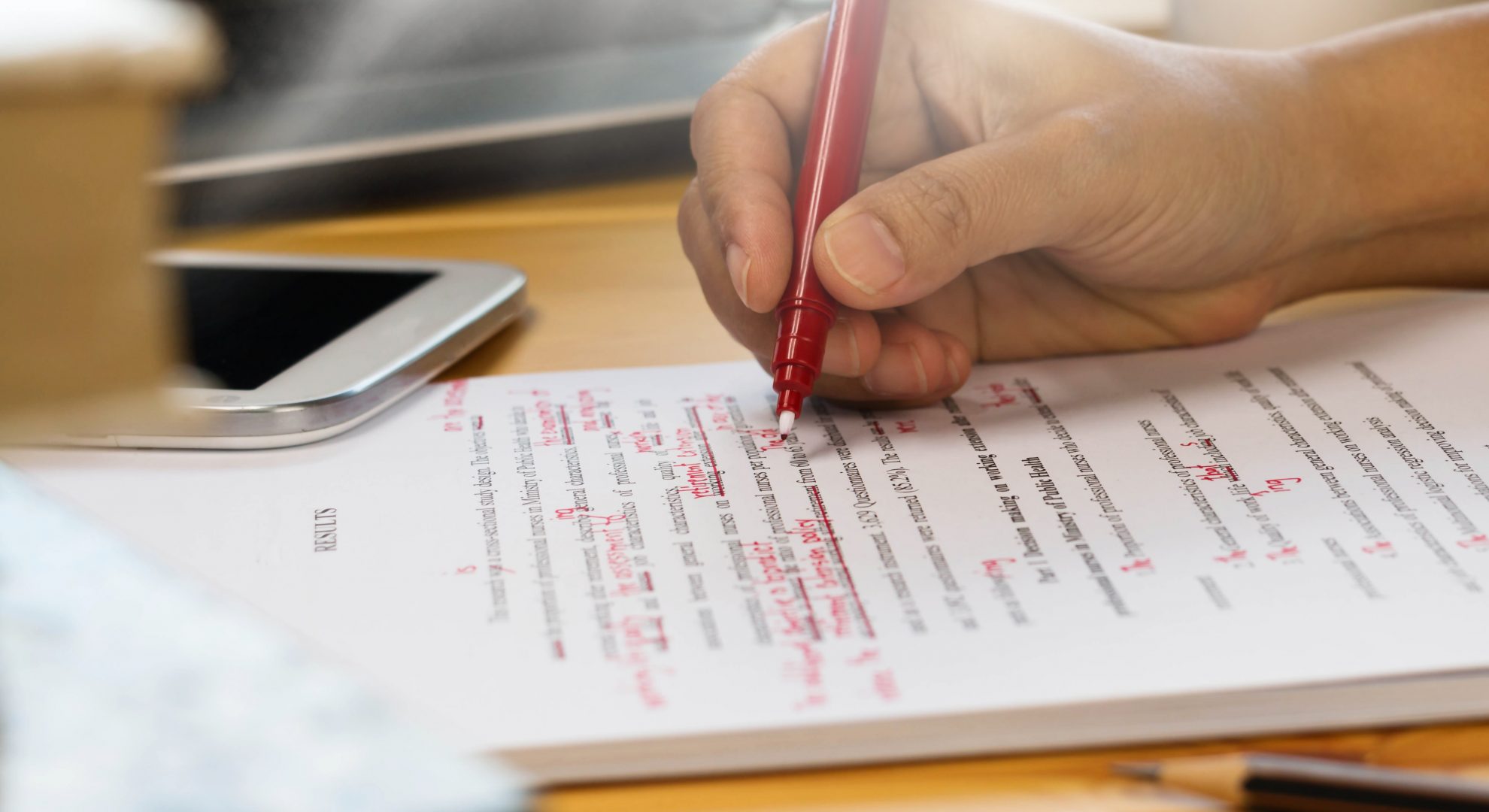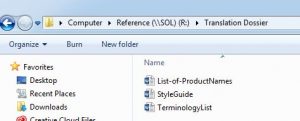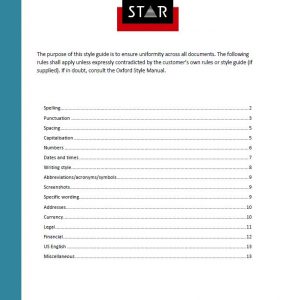In recent blog posts, we’ve been trying to demystify certain areas of buying translations. Today, our chosen topic is preparing content for translation.
Previously, we’ve looked at decoding a translation quote, and for customers in the engineering sector, we discussed the translation requirements for the EU Machinery Directive.
We know that, usually, our customers are not experts in translation. We don’t expect them to be; that’s our job. Yet, much of the way we interact with them assumes a certain level of knowledge.
With this series of articles, I hope to share some insider tips to help our customers when they purchase translations and when they are preparing their content to be translated.
Do you need to spend time preparing your content for translation?
So, you’ve done your research on exactly what you need to translate. You’ve compared your quotations. You feel ready to proceed with a translation project.
Perhaps you’ve heard that content should be prepared for translation before your supplier starts work?
What do you need to know? What do you need to do? Do you need to do anything at all?
Think of it a little bit like starting a DIY project. Yes, you could buy some emulsion and slap it straight onto the wall without even moving the furniture. (Don’t do this.) However, you might get a better result if you prepare the walls beforehand.
When it comes to translation, preparing content is the same as preparing your walls. You should carefully choose your paint, mask any areas that don’t need to be painted and fill and sand any holes. Not only will you receive a better translation, but it will be cheaper and faster. Who doesn’t want that?
How do you prepare for translation?
In short, you need three things:
- A clear project brief that provides everything the translator needs.
- An unambiguous text that reads well.
- Optimised formatting and layout.
We looked at all the ways in which our Project Managers and customers prepare content before translation. It inspired the following non-exhaustive, but pretty comprehensive list.
Our tips fall into three main categories; project set-up, text and formatting.
Preparing your project before ordering the translation
All our translators have higher education qualifications in translation and foreign languages, as well as being experts in various specialist sectors. However, the end customer should always be the expert.
For this reason, customer collaboration is key. Project set-up is important for a successful translation project. When it comes to preparing content for translation, you are not just preparing the content itself but everything that goes along with it.
As a first step, it is important to communicate any hard deadlines, or perhaps the date of a training course or meeting where the documents are needed.
A translation dossier can provide everything your translation team need to know
We recommend compiling a dossier to share with the team working on your translations. It is helpful to provide instructions, a style guide and/or glossary if you have one.
In essence, if you have a sales or marketing strategy that defines your customers and how you communicate with them, share it with those working on your documents. It pays dividends to share this with your translator. It ensures that your brand voice is the same across languages.
Many languages use multiple levels of formality and vary sentence structure for certain audiences. Providing clear guidance on this when preparing content before translation starts avoids guesswork or time delays due to queries.
Providing a terminology list can also reduce queries and speed up the translation process.
What other information is useful?
Do you need further inspiration on which information to provide when preparing content for translation? STAR UK uses an internal style guide. It ensures that all our documents display consistent style. Among other things, it means that all our translators use the same capitalisation, date format and follow the same punctuation rules.
Generally, we also make notes on style for each of our customers. These notes include information regarding brand names, product names and any preferred terminology or phrasing. We use this when translating and update this regularly based on any customer feedback.
The final point to add to this section on preparing content before you start translating is that your translation team ideally need an editable file to work with.
The advantages of this are twofold. Using an editable file ensures that your translation team can use a translation memory tool. This allows them to leverage any existing translations, thereby reducing your costs. Using an editable file also means that there should be no charges for formatting your translated document.
Make sure that your text can be easily understood
All of the tips included in this section could be summarised as “make sure the text reads well”. Use of clear and concise language avoids ambiguity of meaning and leads to a better translation overall.
A translator always works into their native language, so are reading your text in their second (or third) language. They have extensive qualifications in this language but can still be thrown by awkward phrasing or typing or grammar errors.
Preparing technical content for translation
For a technical manual, we recommend that technical terms are used consistently. This is an obvious point, but inconsistent terminology occurs very frequently. Perhaps more frequently than you might expect.
A translator will assume that two terms which are similar but slightly different will require two translations. This could lead to ambiguity in your translated documents. Acronyms should also always be avoided or explained when they are first used, again to ensure that the translator can deal with them accurately.
Preparing marketing content for translation
For a marketing text, it can be tempting to stuff your text full of idioms and clever turns of phrase. These techniques create powerful writing and will attract readers. However, be mindful of your translation team.
Certain cultural references need to be explained. These explanations lead to long sentences and complicated texts. Other references are better omitted. Omission of certain text might remove some of your sales arguments.
Optimised formatting makes a world of difference
When it comes to content preparation for translation, document formatting is paramount. In fact, we’ve dedicated a whole blog post to formatting MS Word documents for translation. Yet, this step is often overlooked, and the importance is regularly underestimated.
On the technical side of translation, translation memory tools consider a text in sentence units. The tool looks at the use of punctuation and formatting markers such as line breaks. Incorrect formatting can lead to segment fragments appearing in the translation tool, which in turn can lead to mistranslations or inconsistencies when an existing translation cannot be found due to the sentence split.
For the customer, this can be frustrating – updates to a product manual should lead to minimal translation work, though the quotation shows it to almost need retranslation. Spending some time preparing content formatting before translation can drastically improve translation statistics.
Improving formatting is the simplest way to keep translation costs down
On a personal note, I’ve been working as a Translation Project Manager for nearly seven years, and I can spot incorrect formatting at 50 paces. (Yes, I know, it’s a pretty useless skill to have…). I have the formatting marks displayed in every text editor tool that I work in, solely to ensure that formatting is correct.
For me, it is the simplest way to keep your costs down. Poor formatting in a document causes problems during translation. Neglecting to prepare your content for translation will slow down the translation or will incur costs to improve formatting. By optimising your formatting to ensure clarity of message, you ensure that your content is prepared for translation.
Earlier in this post, I said that editable files are important for your translation team. The point is also relevant for this section – but in terms of ensuring that graphic text within your file is also editable.
Often, graphs or image labels are transferred into a document as an image. Translation Memory tools do not recognise them as text. They are then omitted from the initial translation project. In a separate step, they must be typed up, translated and then inserted back into the translated document. All of which incurs unnecessary cost.
Consider text expansion when preparing content for translation
This last suggestion is more of a best practise idea to think about during content preparation for translation. In no way is it a must for implementation.
In other blog posts, we mentioned that certain languages “expand”, i.e. they use up more space in the target languages than they do in the source language.
There are rough figures that we can assign to estimate this expansion (or contraction) rate, though there are no hard and fast numbers. It should simply be something to be aware of when designing a document.
I’m sure this isn’t the first thing you think of when you consider preparing your content for translation. However, if you use small font sizes so that you can fit it all on the page, then the spacing errors will be far worse in your translated document. Even when all of the document text is visible and readable, the layout may seem cluttered if everything is squeezed onto one page.
I hope to have covered the entire sphere of tips for customers who are thinking of preparing content for translation.
It can seem that there are so many things to think about, it is almost an impossible task. I would frame it in this way. These tips are not just helpful when preparing content for translation – surely these are golden rules for content creation in English too?!
A good text should be easy to understand. This includes the style of your source text, the actual text itself as well as the layout of the document.
In summary, set good habits and preparing content for translation will require no additional work on your part.
Author: Bethanie Melly, Senior Project Manager


